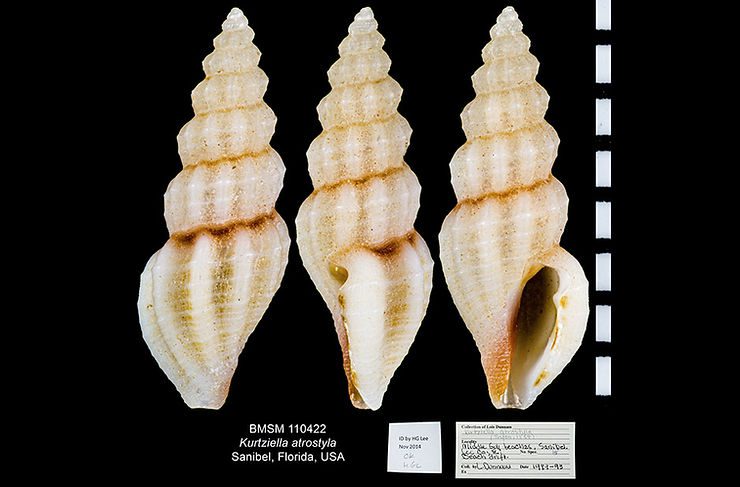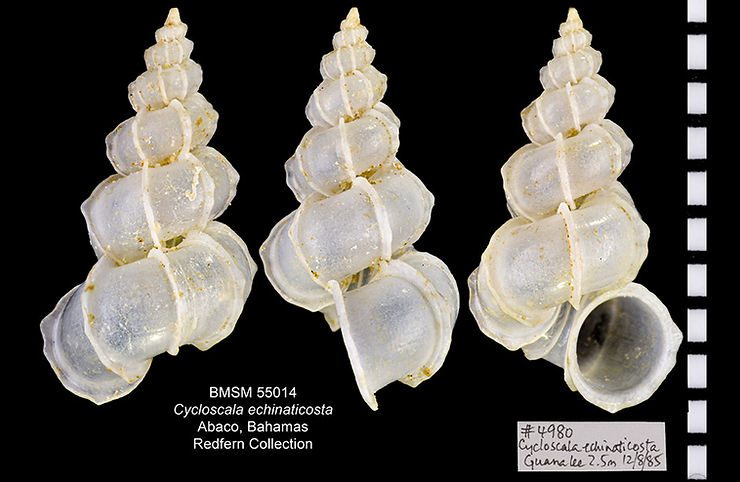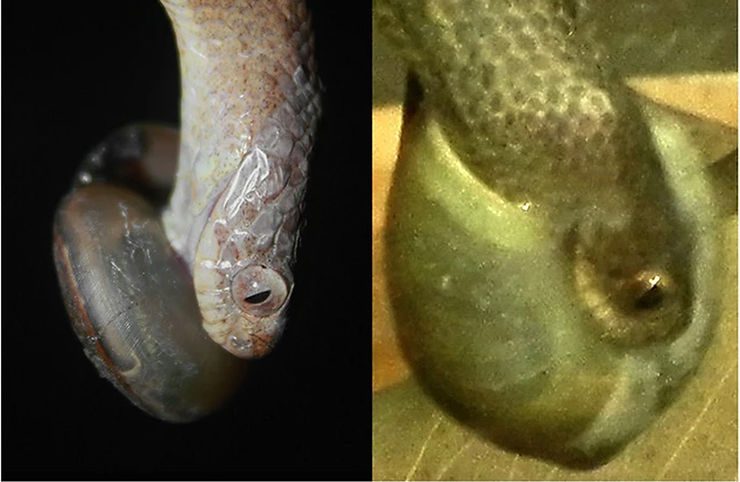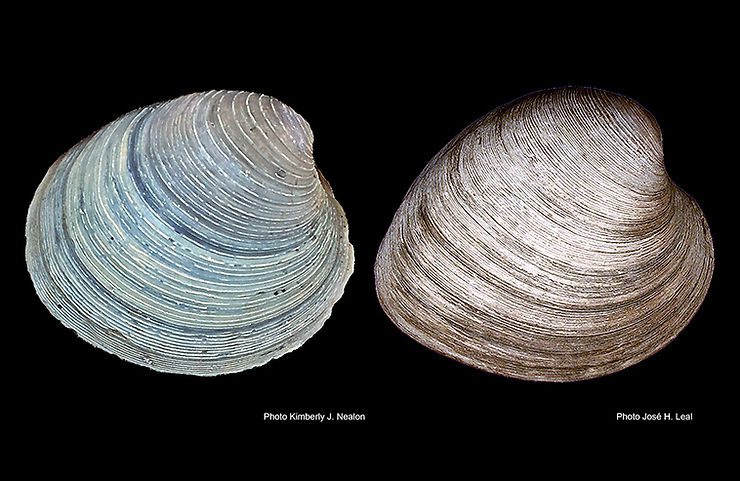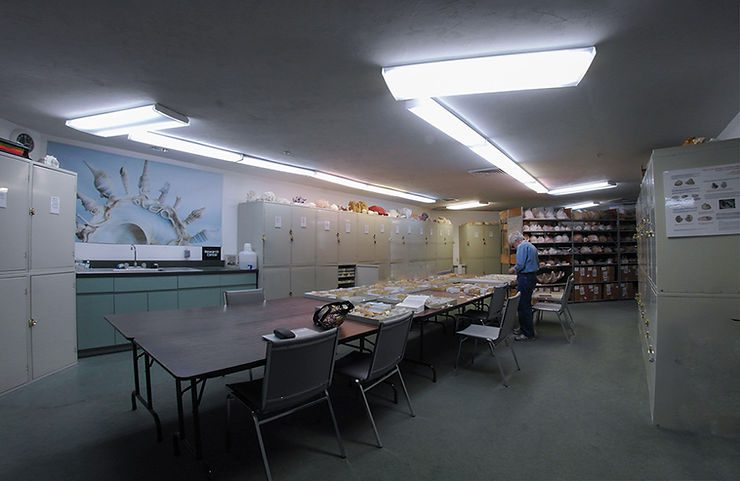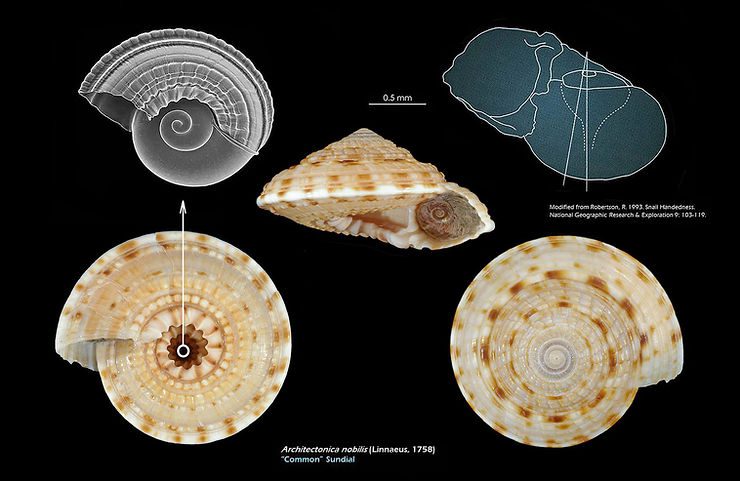
Upside-down Baby!
In gastropod mollusks, the larval shell ("baby" shell, or protoconch), is usually retained in the apex (the "tip") of the adult shell. After metamorphosis from larva to adult, there may be differences in color, thickness, and texture between the protoconch and the adult shell, but usually the direction of coiling stays the same with growth. Gastropods with a right-handed larval shell continue to grow a right-handed adult shell, and vice versa.An exception to this same‐coiling-direction "rule" is
